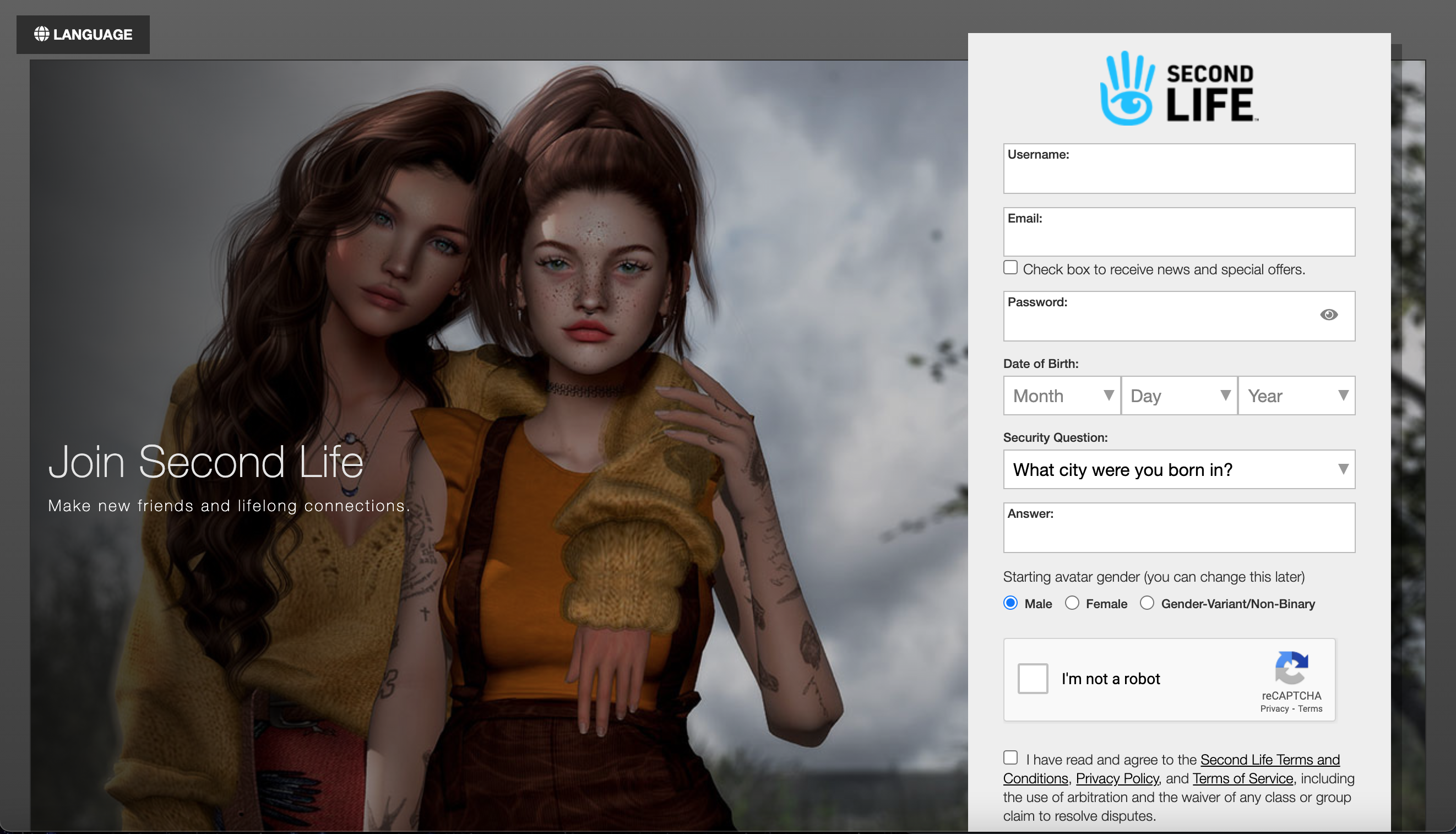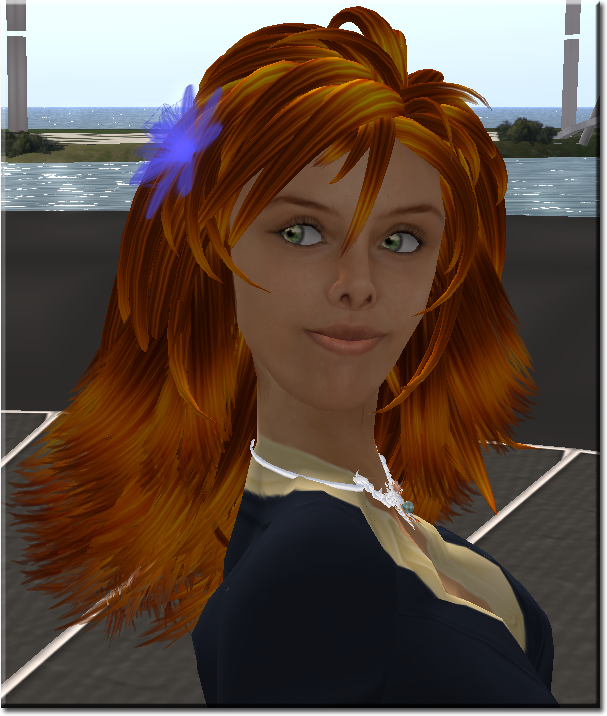The First-Hour Experience

If you’re lucky, you’ll have found a good greeter/helper which might give you a few tips, explain what Second Life is all about (or, more likely, tell you what it is not about), and teach you to use Search to join groups or on-going events. With even more luck, you might have struck gold and found something that interests you from the very start. This depends wildly on the new user’s expectations and what they have read about Second Life; if they have absolutely no clue on what to do in SL, and are not even able to tell the greeter/helper what they are interested in, it’s highly likely that there will be little that catches their attention.
A user’s personality will definitely be the most determinant aspect after this stage. An Explorer type (using the old classifications) will very likely not be bothered by an initial mediocre experience: they will be driven to look around for interesting things no matter what. Other types might not be so lucky. Even someone just looking for pleasant conversation will hit a roadblock: where are my friends? What is going on in SL? What are the most interesting places to visit and meet people?
Community Gateways — when people actually bother to read their descriptions — might help a bit here, since they actually provide some of the answers to these questions. However, in reality, my own experience shows that most people just click on the first link they see and never bother to read the description, and this will always lead to confusion. Someone just looking for a date will have no fun arriving at a business-oriented area 🙂 and might not even understand that they’re not at the “right” place for finding a date…
Add to all the above the issues of insane lag, people using their US$300 low-end laptops to connect to SL over a faulty wireless connection, and a very-hard-to-master control interface, and you can start to understand where the problems begin.
Now, M Linden, LL’s CEO, is quite aware of these problems, and has, since last year, made the “first-hour experience” one of LL’s primary goals to achieve: make it smooth, engaging, entertaining, helpful — and hope against hope that it all works fine so that users remain in SL instead of logging off, never to return.
So, what has been done so far in a year to improve the first-hour experience?
Community Gateways became more widespread. After some beta-testing of the concept, a lot of Community Gateways popped up, staffed by volunteers on their own private land, and added to the list after some Linden validation. I believe this was one good step ahead: the old model of LL-created content on orientation islands which was perpetually stuck in 2006 simply wasn’t working any longer. Community Gateways provide a staff of volunteers that help the new user at from their very first moment; since almost all have some interest that the newbies return, too, they’re eager to do their best to keep them happy, and will almost always be very helpful. These gateways are possibly even more important for specific languages — automatic translators are just not good enough for explaining complex concepts like, say, fine-tuning one’s Preferences. It would be quite interesting to know how well the Community Gateways are actually working in terms of user retention. Again, from my own experience, I don’t see a lot of difference, but that’s just because most of the people arriving at our orientation area rarely know where they are or why they clicked on it on the first place.
Help Islands were abandoned. There seemed to be little point in having them. After all, newbies arriving at the Help Islands already went through a tutorial; and they would go ahead to an infohub anyway to experience the “real” Second Life. Tateru Nino hinted that newbies going through Help Island, where volunteer Mentors were allowed but nobody else, didn’t remain significantly longer in SL than other newbies who went directly to an infohub (or, even more dramatically, newbies that did not meet any volunteers or didn’t go through Help Island would be more likely to remain in SL!). So I guess that LL was just cutting costs.
The Mentor Group was disbanded. This was a bit baffling. At one stroke, Linden Lab removed 3,500 volunteer helpers from the map. The main official reason was the inability to communicate with them; only a few dozens would keep regularly in touch and provide feedback, as well as agreeing to a common way of dealing with newbies. The vast majority was pretty much clueless about LL’s directives for volunteering as a mentor. And even if they weren’t, how could you possibly communicate with all of them? LL’s own V-Team (Volunteer Team) was too small to keep in touch. Instead, LL started to support “informal” helper groups (which would have no fixed abode since the Help Islands were gone) and promised to keep in touch with them. The V-Team was disbanded, as was its blog, as well as the in-world presence for that team and the volunteers.
Linden Lab introduced the new Homes Programme. This is possibly the most re-used, re-vamped, re-defined idea that pops up every year under a different cover. In the distant past we had “First Land”, where Linden Lab would supply Premium users with a bit of empty land, but you had to provide your own house — and fight your neighbours every inch of the way. This was naturally seriously gamed, and so many restrictions had to be put in place by LL to prevent abuse, that sooner or later the idea died out — to be replaced by the Lab’s own “themed communities” (Nautilus, Bay) which would directly compete with existing communities and land rental facilities. This year we have “Linden Homes“. First impressions seem to be positive but it’s still a bit early to say. Nevertheless, it’s a way — perhaps the only way! — to encourage non-paying residents to become Premium residents.
The website for Second Life has gone through successive redesigns. I’m sure this is an attempt by LL’s web consultants, Big Spaceship, to try at least to make a user’s first contact with Second Life — through the web presence — an engaging experience. I have no metrics to say if the current website is “better” or “worse” — I happen to like it much more, and having a lot of sections translated also helps. Segmenting the market — business vs. residential use — was also a much-needed improvement.
All in all, I don’t have any idea if the above measures have actually had any impact. Tateru Nino encouraged Linden Lab to think much more about the newbies, and forget about the oldbies — since the ability to grow requires “fresh blood”, i.e., new users. There is a limit to how much the existing users are willing to spend in SL, both in time and money. Further growth can only come from external sources. While I argue that Second Life does not require exponential growth to be a success, it also seems a waste that about 3 million users join SL every year and promptly leave, without ever staying around long enough to make a difference. Focusing on those 3 million new users is probably a safer and smarter bet than on the million faithful users that have been around for long but cannot push Second Life to a next stage.
So what would be required to address the needs of those users?


Recent Comments